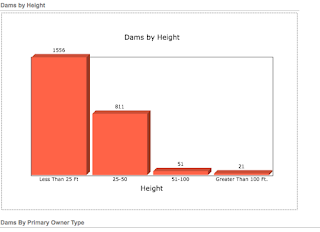With S.C. flooding, some dam resources
(Updated with story from The State)
Another dam has been breached after the torrential rains in South Carolina, this one in Forest Acres, A close-in Columbia suburb, prompting a mandatory evacuation.
As I noted on Twitter and Facebook, I wonder if this gets state officials to finally effectively address and fund the issue of hundreds of small, marginal dams.
It's not a new thing:
https://www.americanprogress.org/issues/economy/news/2012/09/20/38679/the-10-states-most-threatened-by-high-hazard-deficient-dams/
("Even more troubling, six states reported all of their state-regulated, high-hazard dams as “not rated” for structural soundness in 2010. These states are Texas, South Carolina, Hawaii, Florida, South Dakota, and Alaska. Not having a state dam-safety program, Alabama also did not report condition information on their high-hazard dams in 2010."
From NY Times: 4,400 dams nationwide "susceptible to failure."
http://www.nytimes.com/2011/02/22/science/22dam.html
S.C.'s dam safety details http://www.damsafety.org/map/state.aspx?s=41
(Update: The State newspaper followed up on Tuesday, reporting, as others have, that the state spends about $200,000 a year on its safety program.)
And the Army Corps dam database http://nid.usace.army.mil/cm_apex/f?p=838:12
S.C. has 2,439 dams in the Army Corps database, 671, or almost 28%, high or significant hazard.
http://nid.usace.army.mil/cm_apex/f?p=838:3:0::NO::P3_STATES:SC
This interactive map will let you search by state and county or by ZIP code.
http://nid.usace.army.mil/cm_apex/f?p=838:7:0::NO
(Make sure under "Layers" you expand "Corps of Engineers Data" and click "ALL NID Dams."
Here is part of Richland County near Columbia. All those little squares are dams, many of them less than 25 feet or lower, privately owned and earthen. (I can't give you a direct link to the map - drill down through the database above.)
Here is Lexington County:
To get details on an individual dam, click on the address option on the tool bar (highlighted in red) and then on the dam's square.
Here are a few selected screenshots of the data that gives you a sense of the issue











